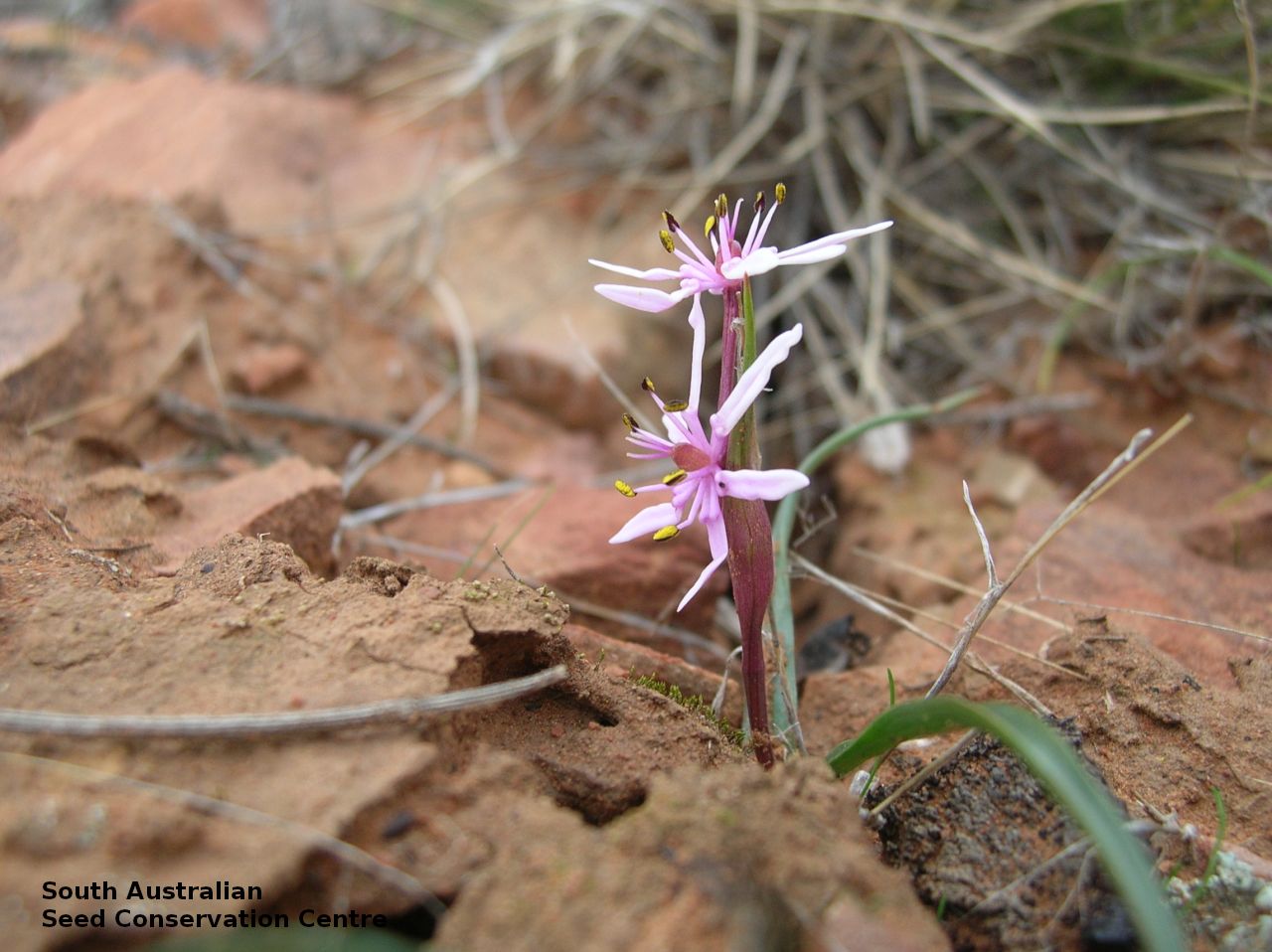
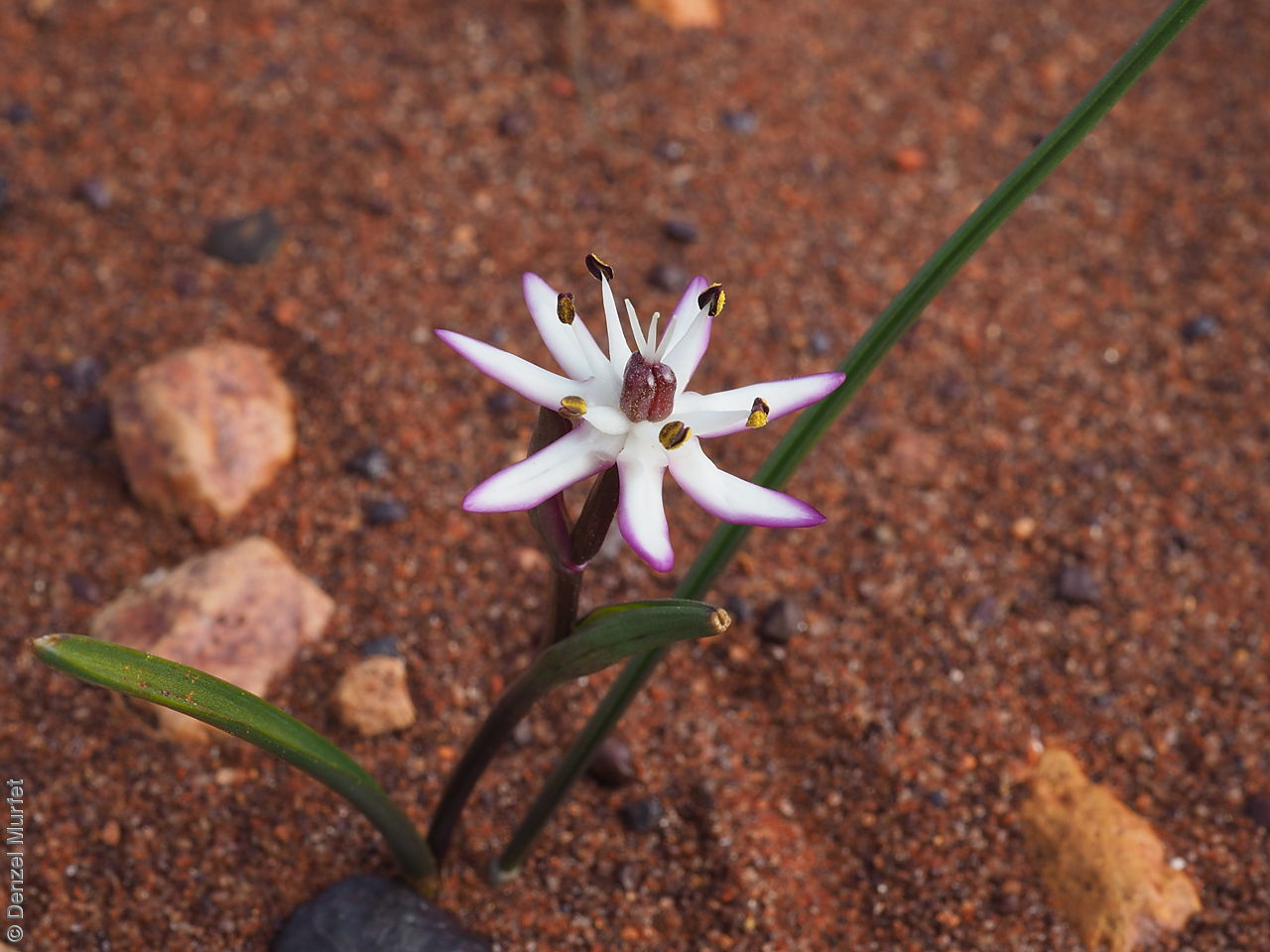
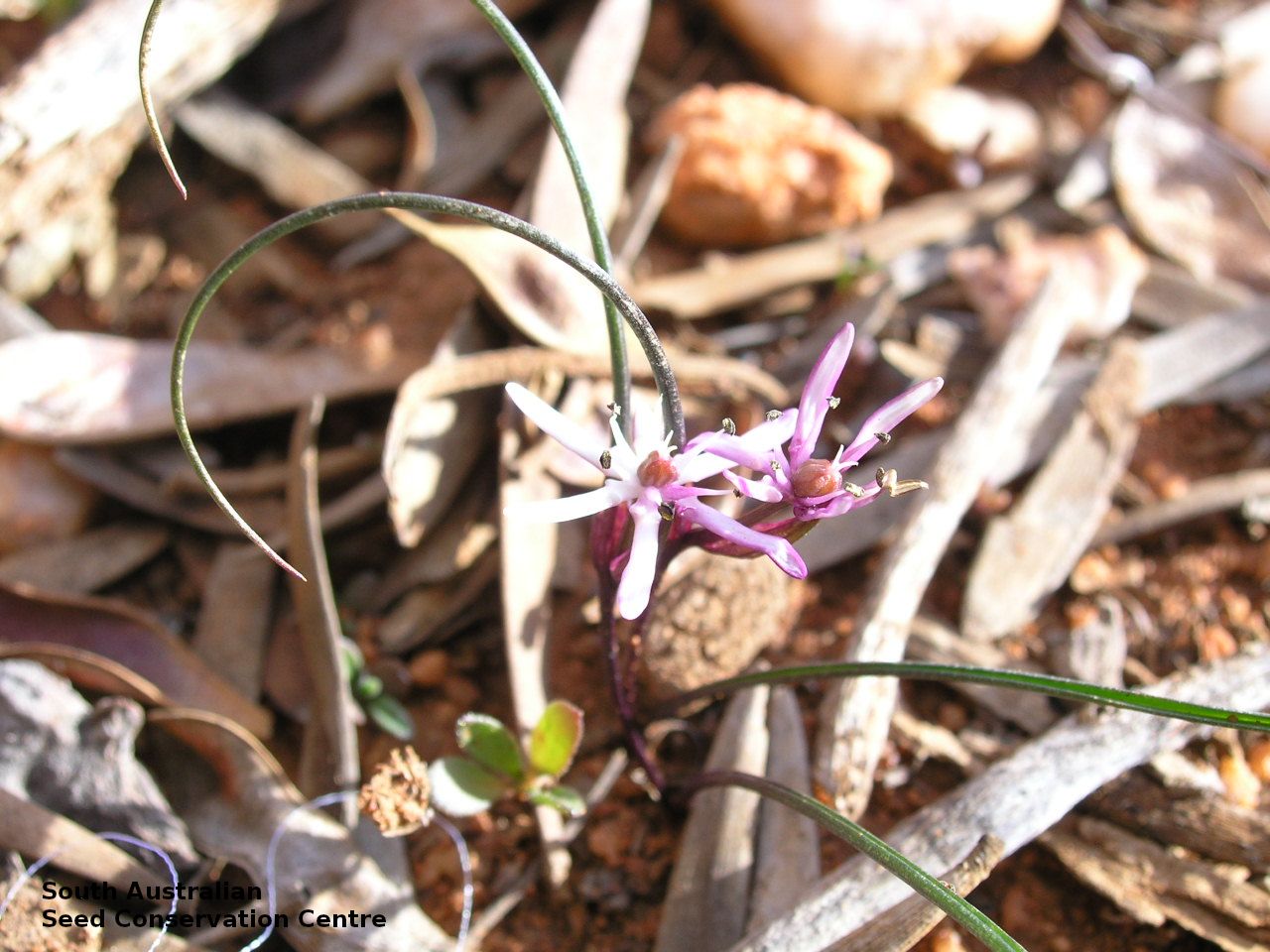
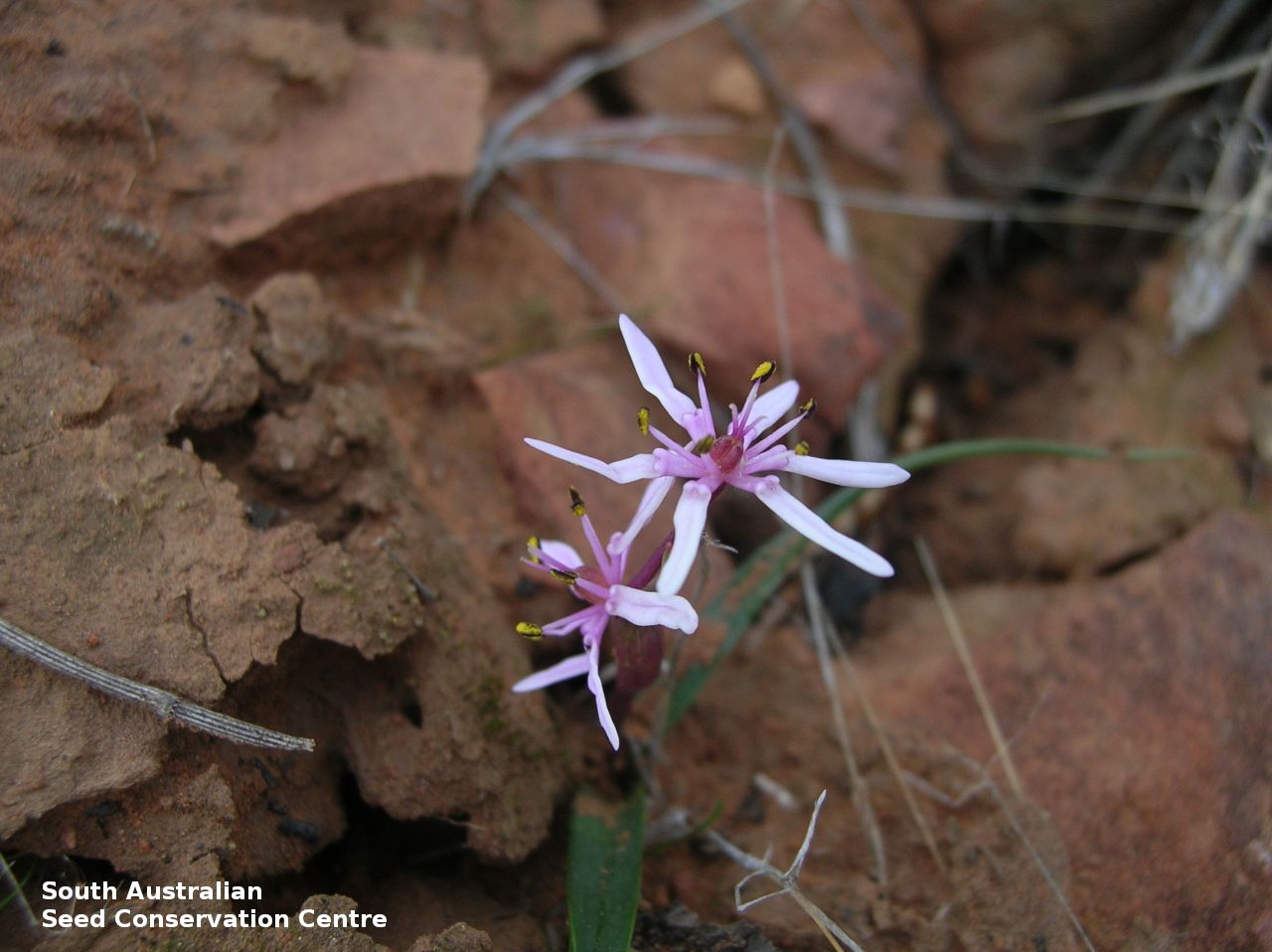
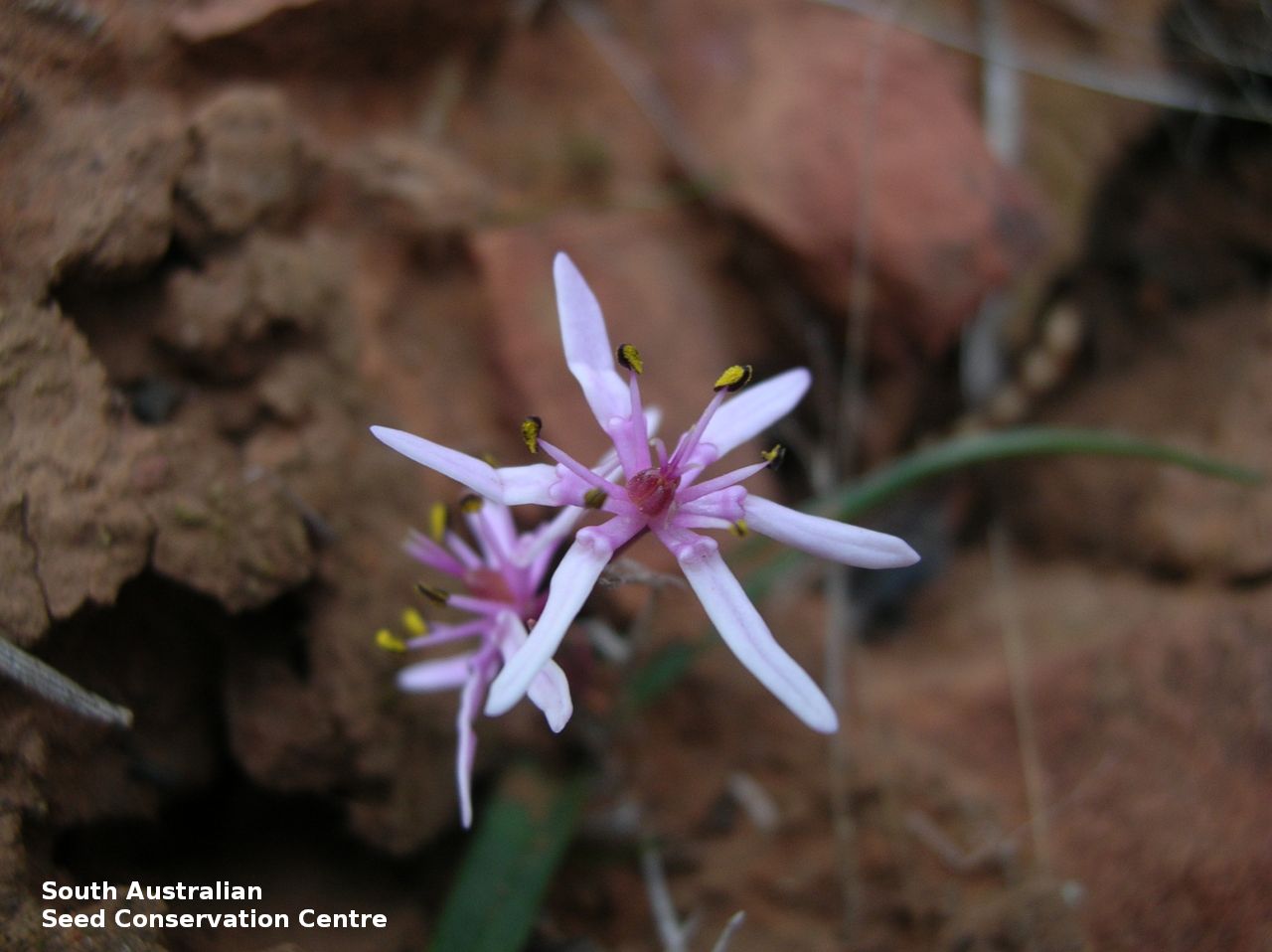
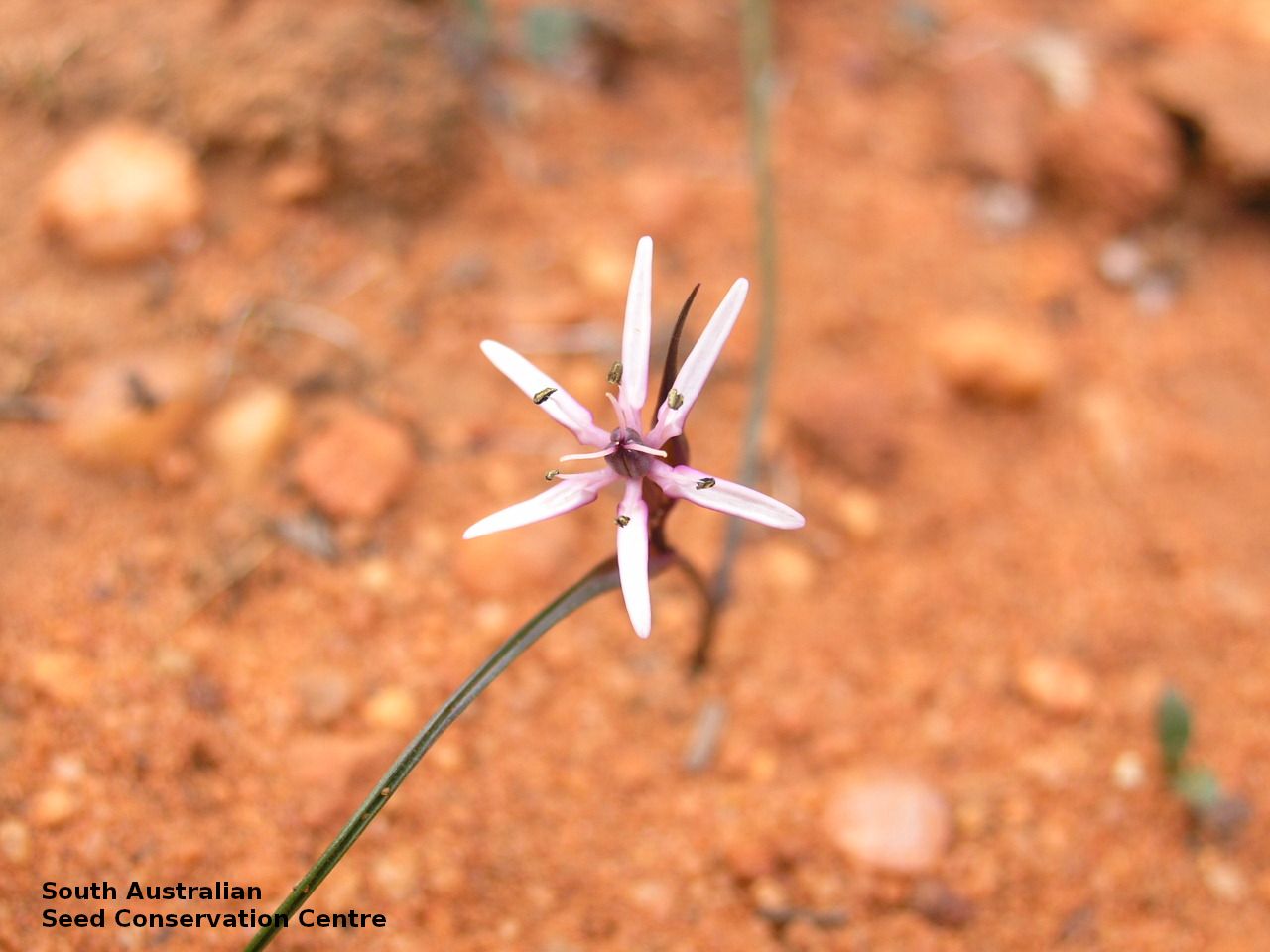
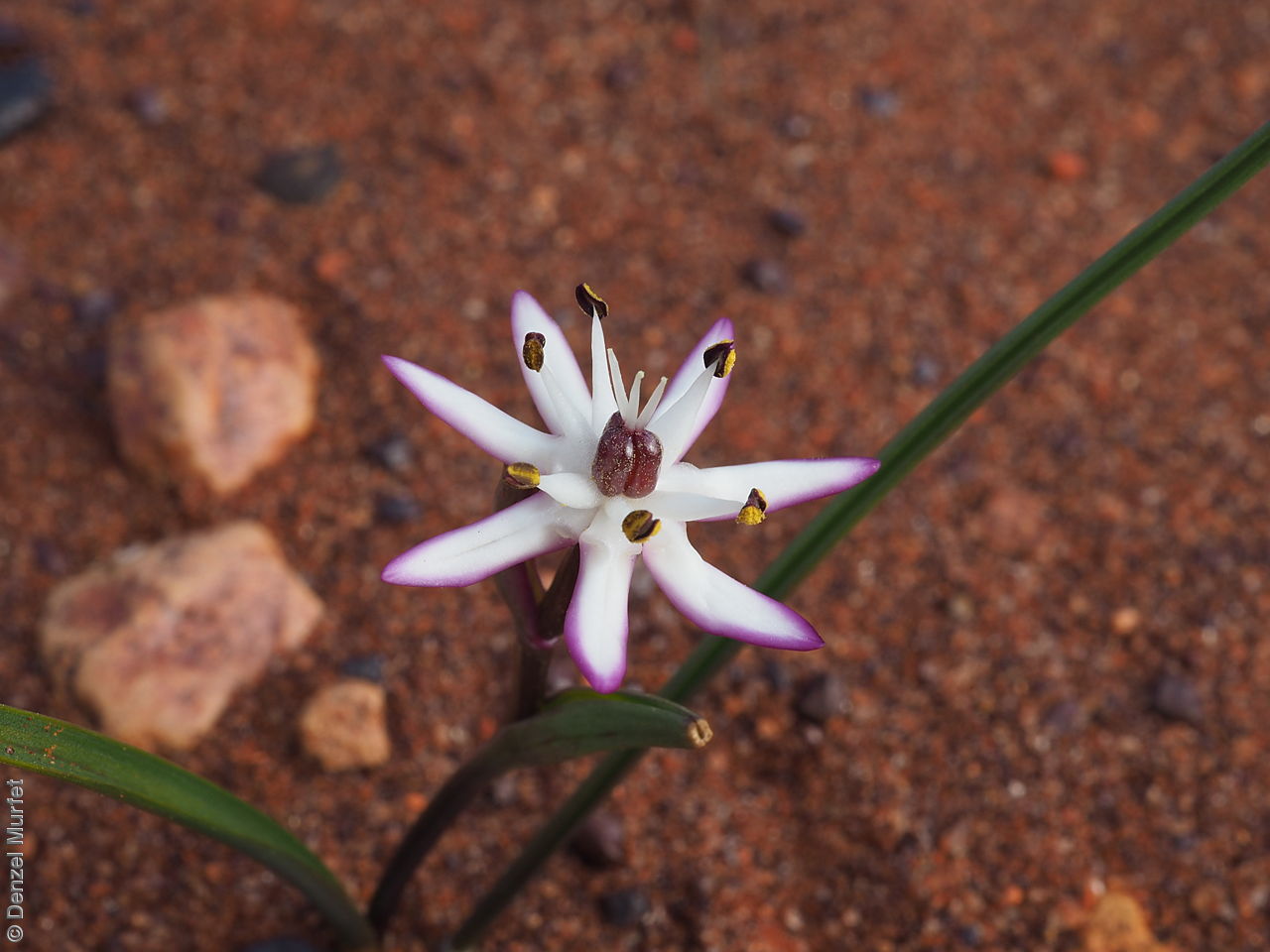

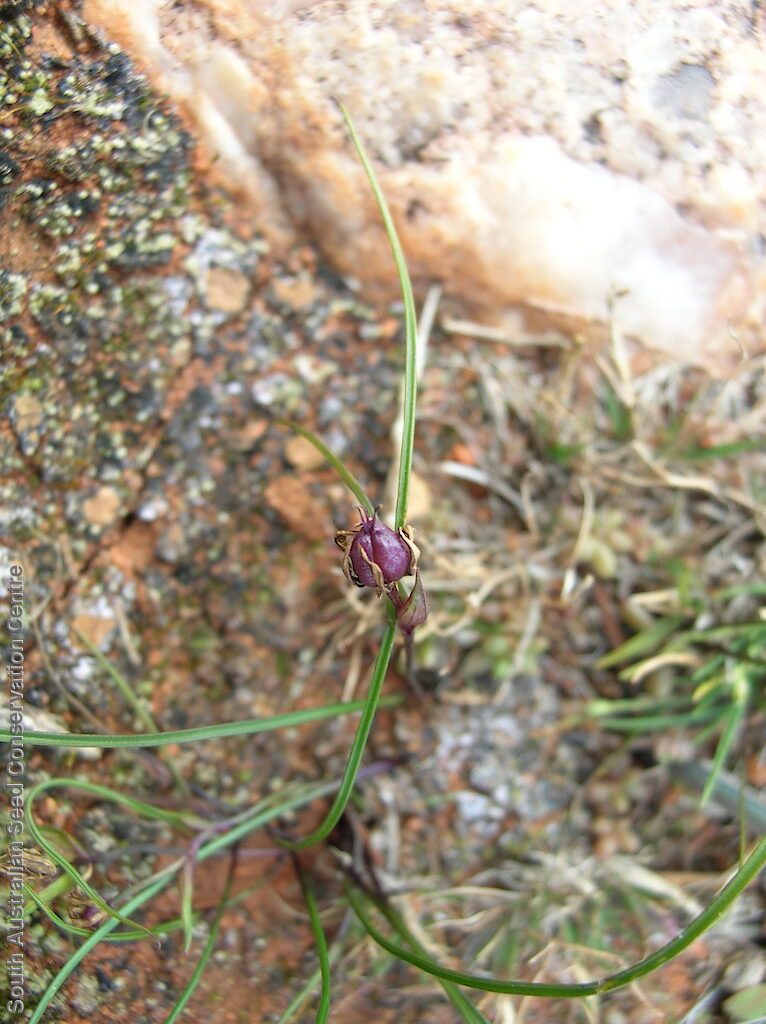
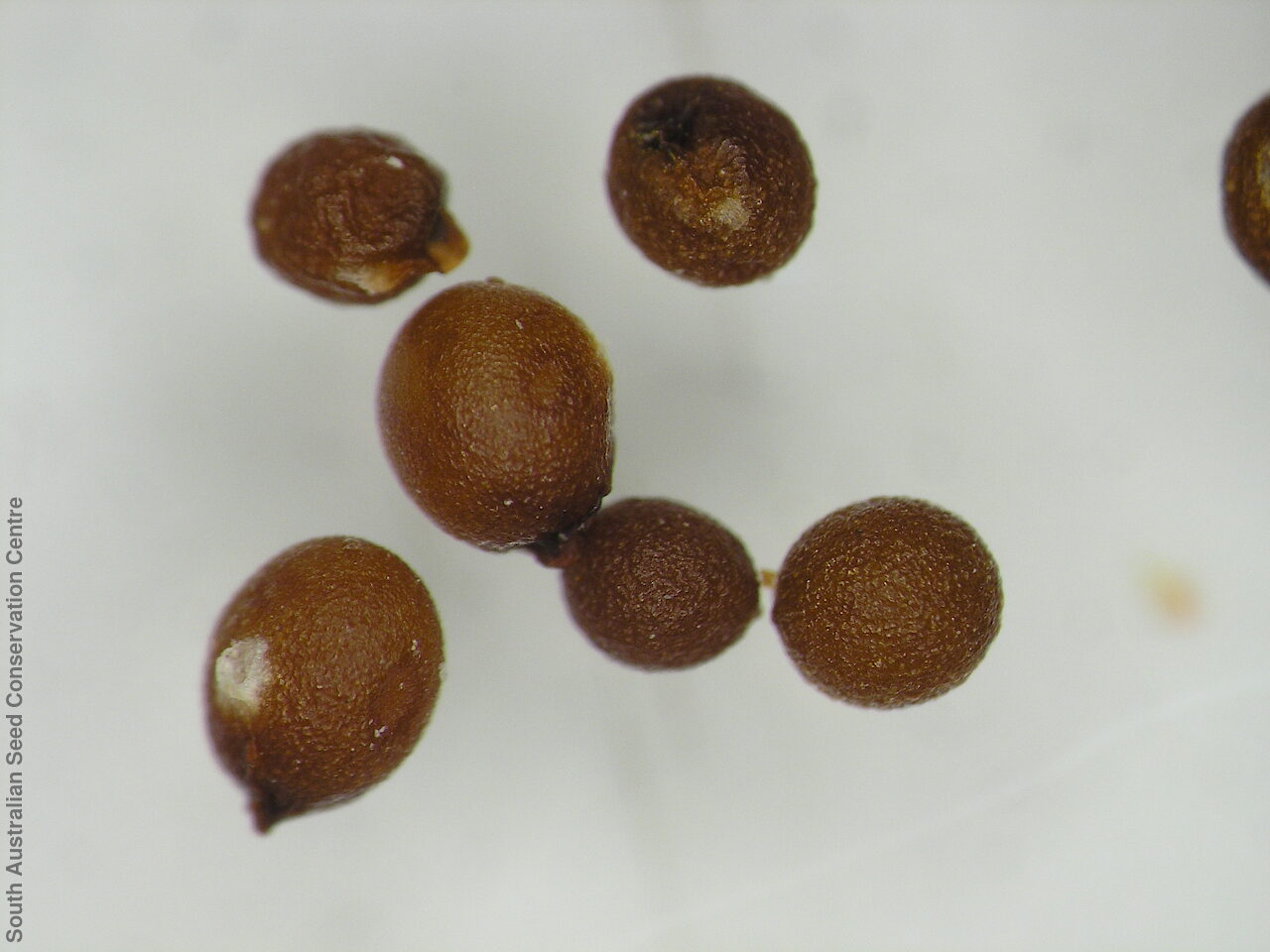
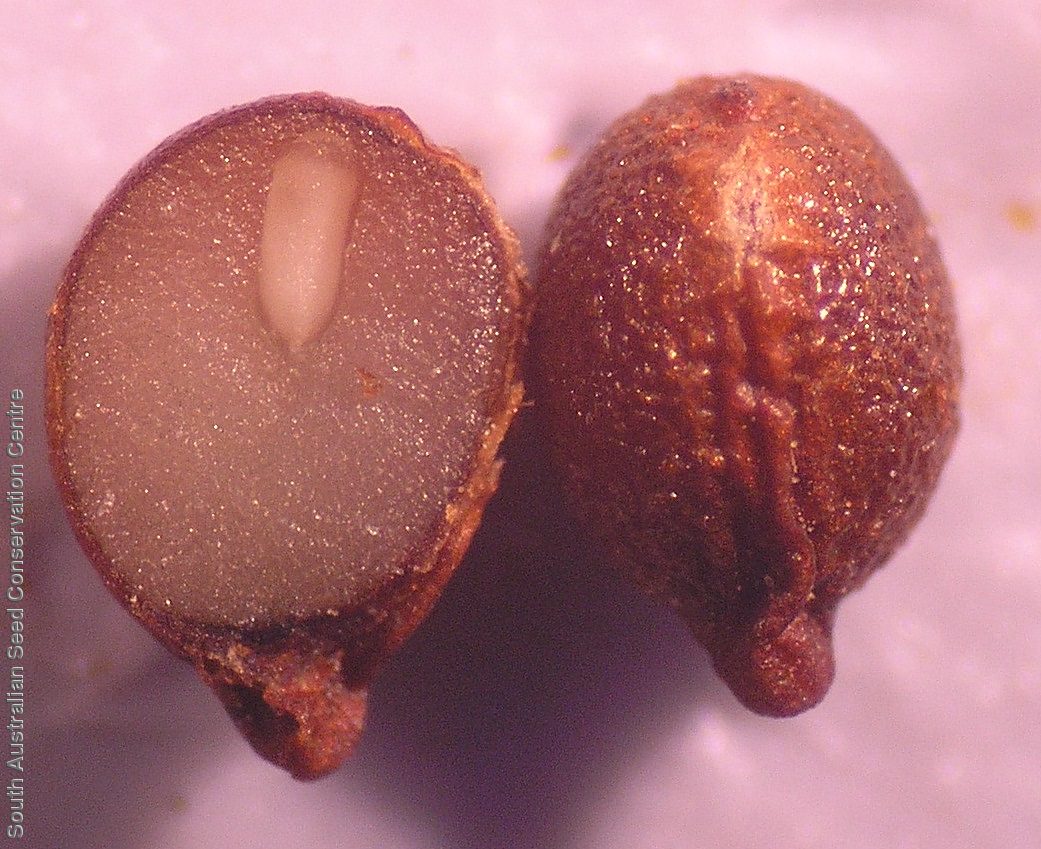

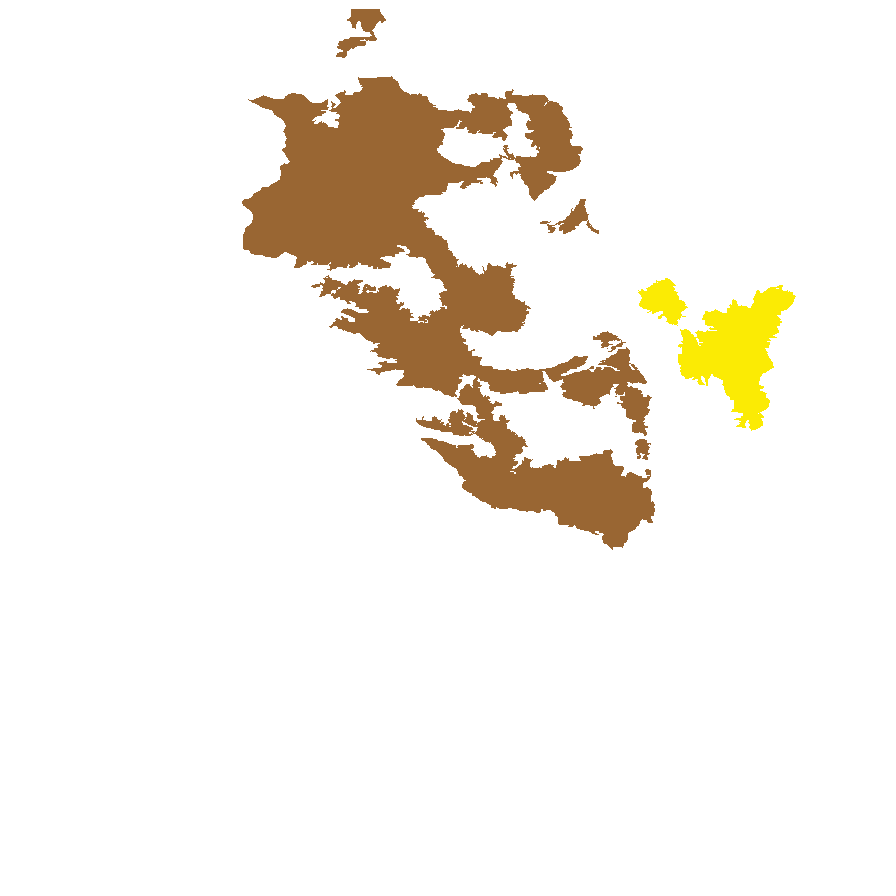
Common names
Starry Star-lily
Star Nancy
Star-lily
Etymology
Wurmbea name after Friedrick Wilhelm von Wurmb, merchant and botanist in 18th century Batavia (Jakarta). Stellata from the Latin 'stellatus' meaning with spreading rays, stellate or star-like; referring to the flat star-like flowers.
Distribution and status
Endemic to South Australia and found scattered in the arid and semi-arid areas, growing on red clay soils in plains and rock hills. Native. Uncommon in South Australia.
Herbarium regions: Lake Eyre, Gairdner-Torrens, Flinders Ranges, Eyre Peninsula
NRM regions: Alinytjara Wilurara, Eyre Peninsula, South Australian Arid Lands
AVH map: SA distribution map (external link)
Plant description
Slender herb to 10 cm tall with purple-tinted leaves and stems. Leaves 3 with upper 2 close together, lowest leaf filiform to linear, channelled, to 10 cm long, base purple, not dilated, apex lax or decumbent, 2nd leaf linear, to 2 cm long, dilated basally, uppermost leaf small just below the flower, dilated basally, ovate, acute. Inflorescence a single large starry white with bright purple-pink margins flower, tepals free from the base, narrow elliptic with thickened margins, nectaries 2 per tepal, pouch-like, very close to tepal margins, raised. Stamens falcate, with inflated bases adnate to the tepals, pink or white, anthers purple. Flowering between June and July. Fruits are brown papery ovoid capsule to 1 cm long containing many seeds. Seed embryo type is linear under-developed.
Seed collection and propagation
Collect seeds between August and October. Collect mature capsules, those turning pale straw colour and containing hard brown seeds. Place the capsules in a tray and leave to dry for two weeks. Then rub the capsules gently by hand to dislodge the seeds. Use a sieve to separate the unwanted material. Store the seeds with a desiccant such as dried silica beads or dry rice, in an air tight container in a cool and dry place. From two collection, the seed viability were high, ranging from 95% to 100%.
| Location | No. of seeds (weight grams) | Number of plants | Date collected | Collection number Collection location | Date stored | % Viability | Storage temperature |
|---|---|---|---|---|---|---|---|
| BGA | 240 (0.6 g) | 20+ | 26-Oct-2004 | Mt Finke Gairdner-Torrens | 9-Aug-2006 | 100% | -18°C |
| BGA | 690 (0.96 g) | 40 | 7-Sep-2006 | TEE16 Eyre Peninsula | 1-Aug-2007 | 95% | -18°C |
| MSB | 1,900 (2.87 g) | 80 | 30-Sep-2008 | DJD1091 Eyre Peninsula | 100% |
Number of plants: This is the number of plants from which the seeds were collected.
Collection location: The Herbarium of South Australia's region name.
% Viability: Percentage of filled healthy seeds determined by a cut test or x-ray.